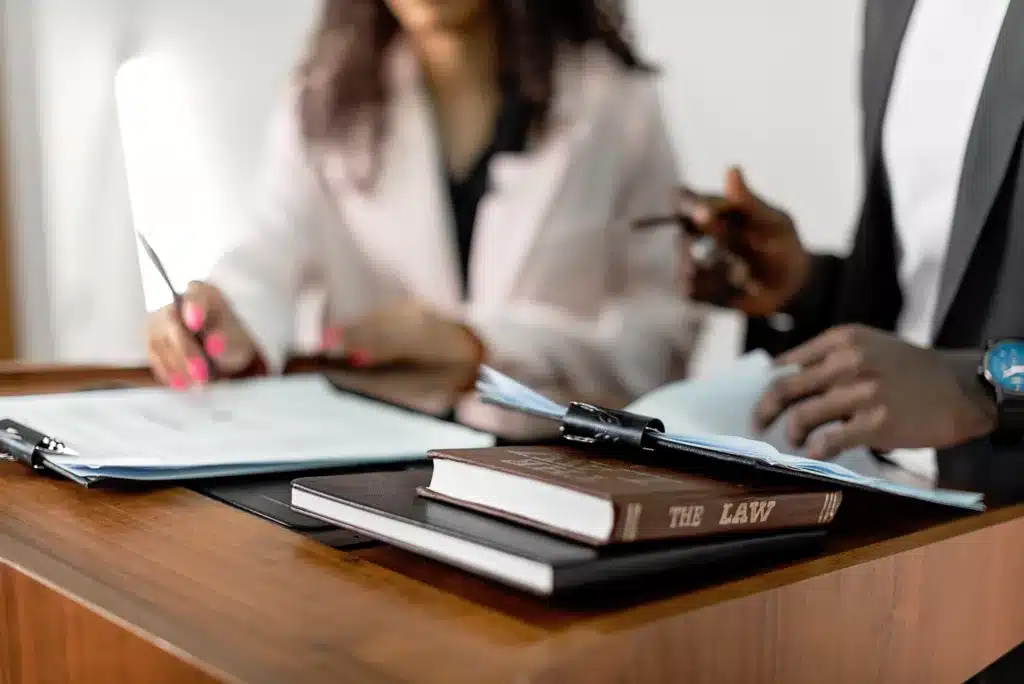A party in a lawsuit files a motion for summary judgment to request a final decision in their favor without going to trial. Absent a trial, the case turns on what the parties bring to the hearing in the way of evidence and argument. In this post, we will explore tangible and intangible things to bring with you to the summary judgment hearing.
The proper mindset
Don’t avoid moving for summary judgment because you think it’s hard to get. Indeed it is hard to get, but it’s a good thing to have. Done right, it saves you tons of time and money. So if you feel you have a solid chance to win, learn what you need to know and go for it.
Likewise, upon receiving a motion for summary judgment from your opponent, don’t give up. Neither should you fight without the proper legal know-how or resources to succeed. Lawyers rely on the ignorance of pro se litigants and often file summary judgment motions no matter how weak their cases are, simply to intimidate you. This often works and they win when they shouldn’t. So learn what you need to know about the summary judgment procedure. Then go in for the win.
Knowledge of your case and your opponent’s case
Before the hearing, evaluate your case. This evaluation should help you anticipate the arguments the opposing party may raise and practice questions the judge may ask. It will also strengthen your position. Review the relevant facts, elements (what each party has to prove), legal arguments, and supporting evidence to identify any weaknesses or potential areas of contention. Read How to Find the Strengths and Weaknesses in Your Case to assist in your evaluation.
Evidence
Compile evidence that supports your motion or opposition. This consists of:
- Evidence collected during discovery, including answers to interrogatories, document requests, requests for admissions, and deposition responses, is the strongest evidence for or against genuine disputes on the facts.
- Affidavits or declarations in support of your motion or opposition. These are written statements made under oath, attesting to certain facts relevant to your case. They must be sworn, come from the affiant’s or the declarant’s personal knowledge of events, and mirror the planned testimony in court were a trial to take place.
- Expert opinions can provide authoritative and credible perspectives on complex or technical issues. Utilize these resources to provide additional evidence and demonstrate the existence of (or lack of) genuine disputes that would warrant a trial.
Once you’ve collected all your evidence, organize it for easy access during the hearing. This will facilitate a clear and focused presentation. An evidence table is useful for quick viewing, as is a summary of the evidence that concisely presents the key facts and their significance to your arguments.
A well-written argument
Based on the rules in your jurisdiction, including any local rules, prepare a written motion or response that does the following:
- Presents a concise clear introduction with an overview of your position and the basic law of summary judgment in your jurisdiction.
- Backs up your arguments with the evidence you’ve gathered. Attach that evidence to your motion or response.
- States facts you rely on and supports each of those facts with admissible evidence.
- The moving party writes an argument (a Memorandum of Points and Authorities in Support of the Motion for Summary Judgment) that (1) sets out clearly and succinctly those facts that are not in dispute; (2) outlines the argument for summary judgment; (3) explains that the law is on the moving party’s side and requires a ruling in their favor; (4) provides references to relevant legal authority, such as statutes, case law, or regulations, and (5) provides a compelling analysis of facts that are not in dispute.
- The non-moving party writes a response (a Memorandum of Points and Authorities in Opposition to the Motion for Summary Judgment) that (1) sets out clearly and succinctly material facts that are in dispute; (2) points out any gaps in the moving party’s facts or evidence; (3) directly addresses each argument raised in the motion; and (4) provides a compelling analysis of why certain facts are genuinely in dispute and why summary judgment should not be granted.
Knowledge of court rules and procedures
Acquainted yourself with the rules and procedures of the court related to summary judgment. Pay close attention to any time limits and filing requirements. By understanding and following these rules, you will ensure that your presentation proceeds smoothly and is not hampered by procedural errors.
Your best oral argument
Prepare your oral argument and practice, practice, practice. The argument should be an outline of main points. You should also anticipate potential questions or challenges from the judge. Practice responding to those challenges effectively. Consider conducting a mock hearing with friends and family to get feedback and refine your presentation.
- At the hearing, the person filing the motion will present their argument first. They will argue that there are no genuine disputes in the material facts of the case and that they should, as a matter of law, get summary judgment. The written document is the guide. There will be no witness testimony at the hearing. The moving party will rely on evidence from depositions, affidavits, interrogatories, and any other evidence gathered in discovery.
- The opposing party will then argue against the motion, highlighting facts in dispute. Opposition to the motion should point out gaps in the movant’s evidence or show that the motion is premature.
- After hearing the facts and evidence and asking questions, the judge will decide whether to grant the motion or deny it. The judge may decide the issue at the hearing or consider and write a decision later.
Preparation is the key to success when it comes to a hearing on a motion for summary judgment. By carefully evaluating your case, conducting thorough research, and crafting persuasive arguments, you can effectively present your position to the court. Remember to organize your evidence, prepare a well-written brief, and practice your oral argument to ensure a compelling performance. This way, you will be better equipped to navigate this critical phase of the legal process and increase your likelihood of achieving a favorable outcome.



